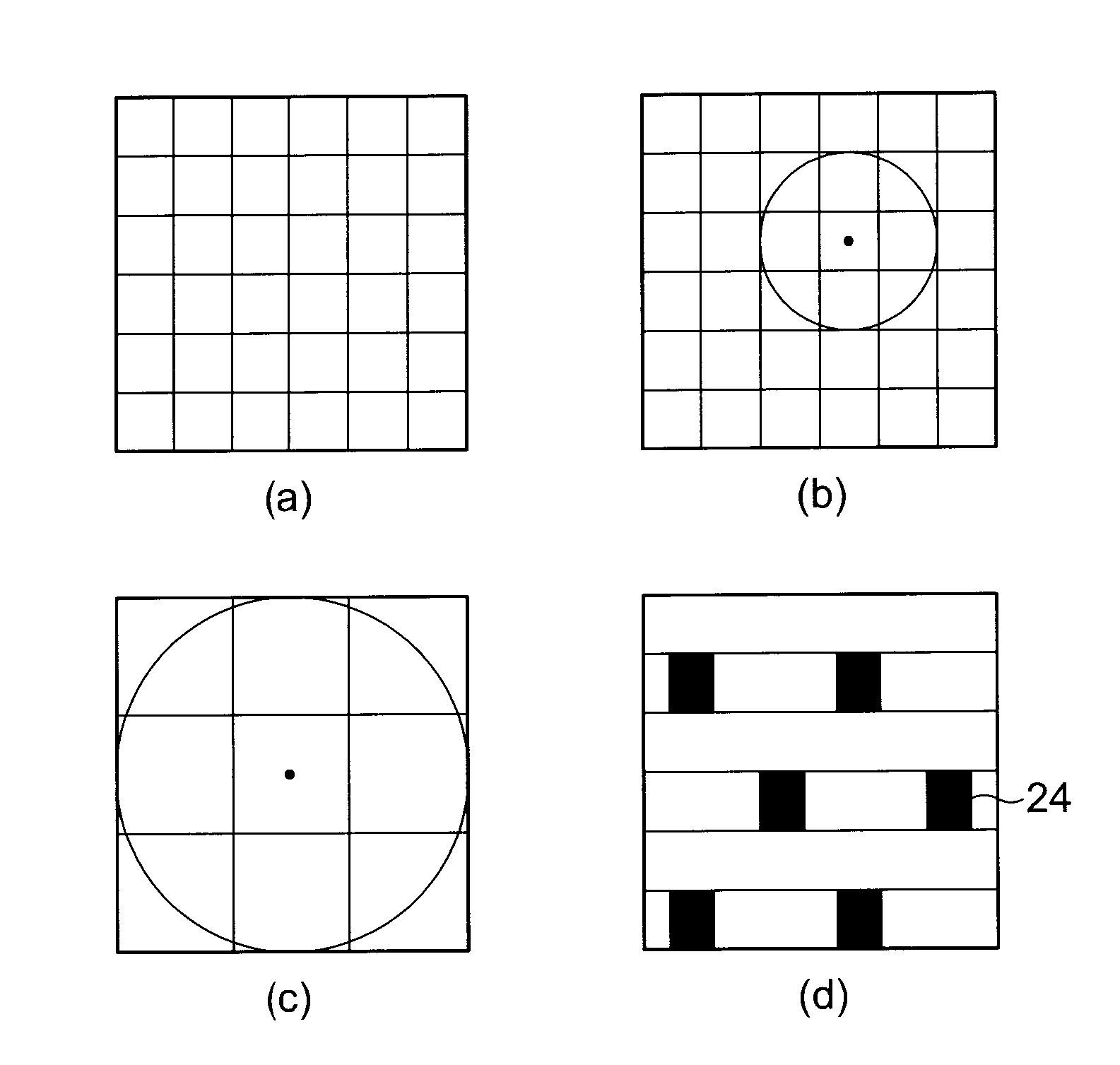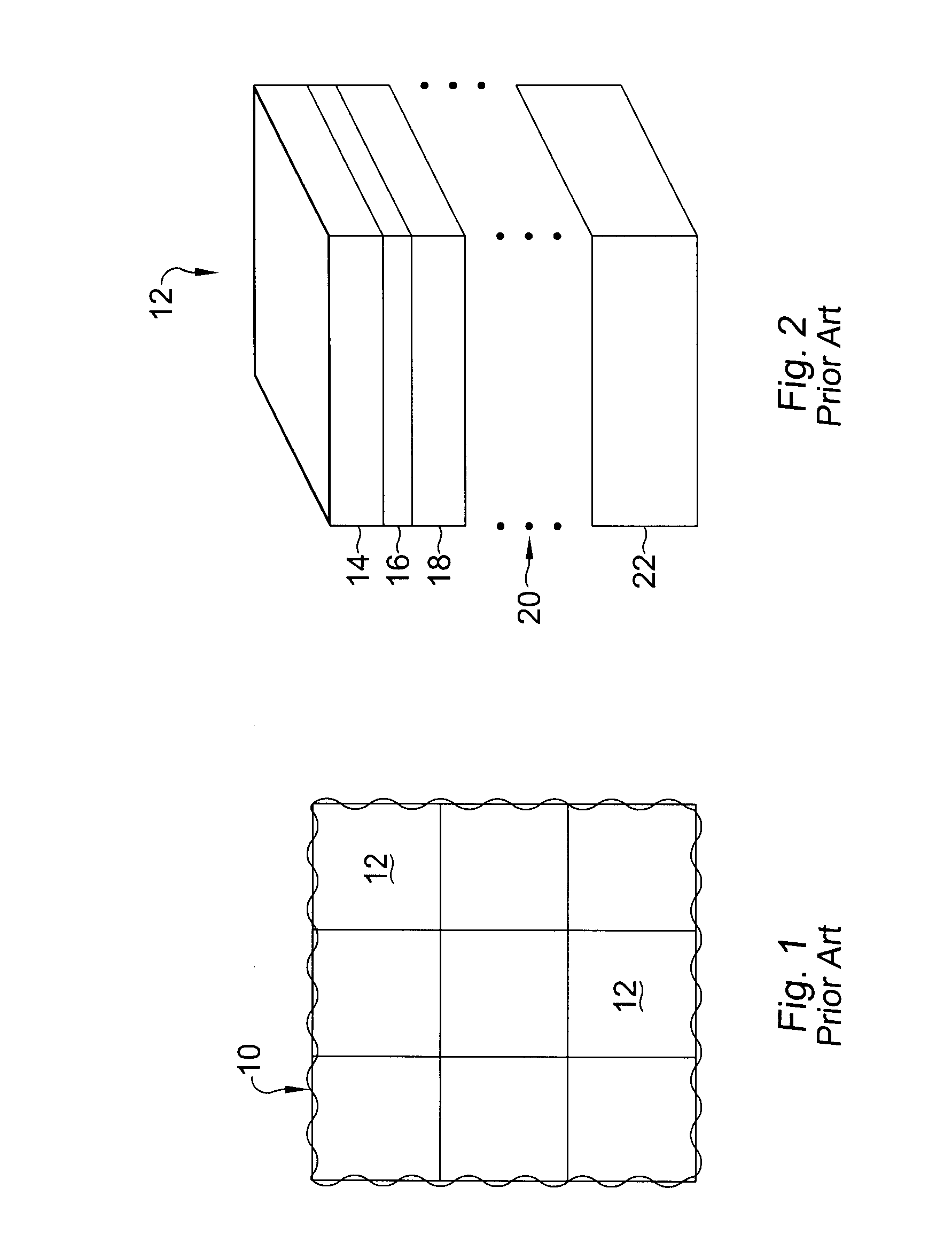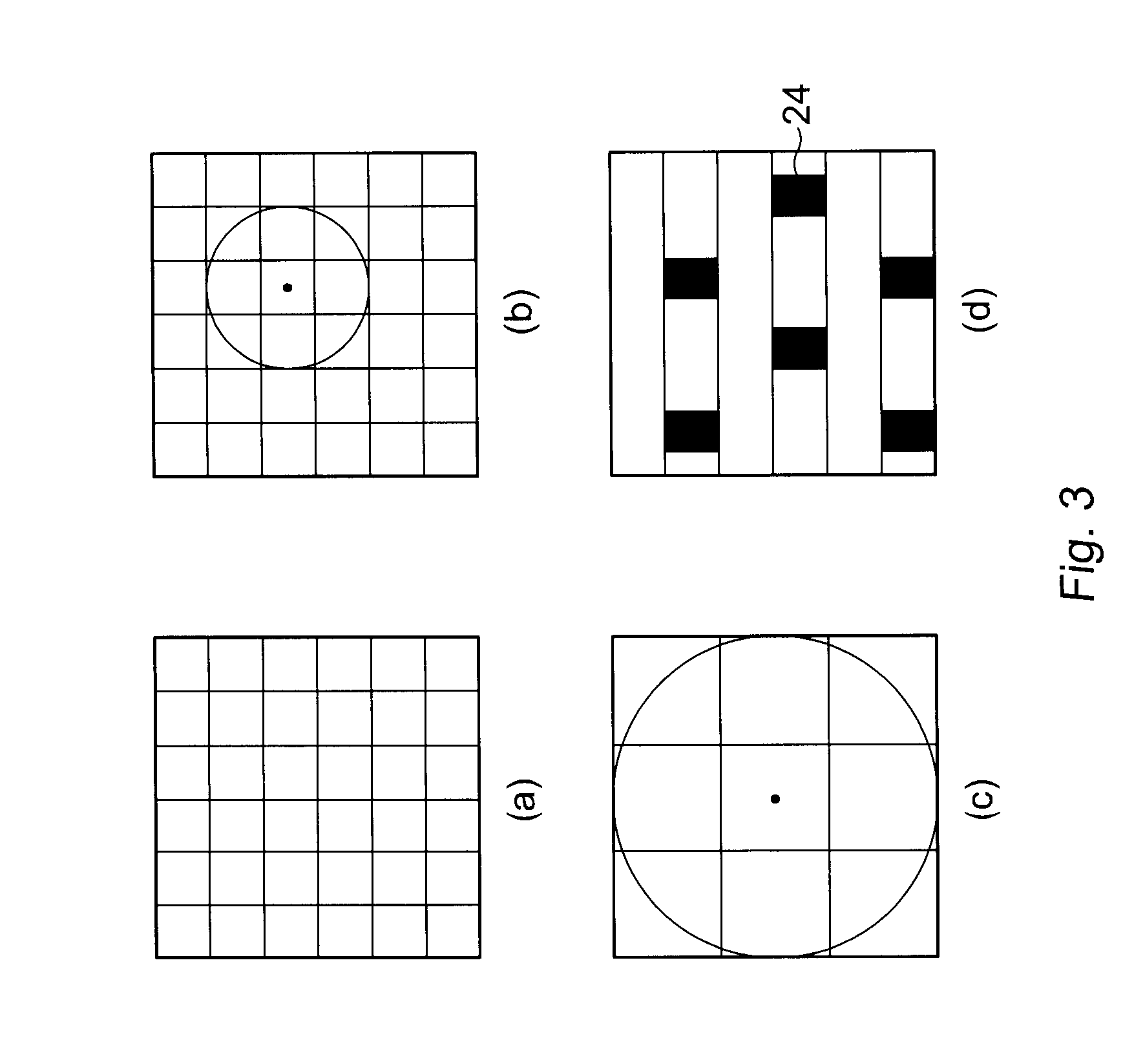Spatially aware drive strength dependent die size independent combinatorial spare cell insertion manner and related system and method
a drive strength and die size technology, applied in the field of integrated circuits, can solve the problems of increasing the area of the chip, increasing the area of the design, and the spare cell area, and achieve the effects of increasing the cell count of the design, short cycle time, and increasing the chip area
- Summary
- Abstract
- Description
- Claims
- Application Information
AI Technical Summary
Benefits of technology
Problems solved by technology
Method used
Image
Examples
Embodiment Construction
[0038]Although the following description uses the design of a semi-custom ASIC as an example, the description may also apply to full-custom ASICs, FPGAs, other programmable logic devices (PLD), and other ICs in general.
[0039]Generally, an embodiment of the invention is to strategically swap filler cells for spare cells in an IC such as a semi-custom IC. This embodiment may provide some advantages. First, strategically placing the spare cells provides more insurance that spares will be located in areas of the chip where they may be needed. Second, strategically placing the non-sequential spares, such as the combinatorial spare cells, means that these spares no longer need be tied to the locations of other spares for example, spare flip-flops. Nevertheless, the spares may still be connected in a specific pattern. Third, additional spare cells need not be added to the design, or at least not as many. That is, the spare cells need not increase the size of the chip, or at least not as mu...
PUM
 Login to View More
Login to View More Abstract
Description
Claims
Application Information
 Login to View More
Login to View More - R&D
- Intellectual Property
- Life Sciences
- Materials
- Tech Scout
- Unparalleled Data Quality
- Higher Quality Content
- 60% Fewer Hallucinations
Browse by: Latest US Patents, China's latest patents, Technical Efficacy Thesaurus, Application Domain, Technology Topic, Popular Technical Reports.
© 2025 PatSnap. All rights reserved.Legal|Privacy policy|Modern Slavery Act Transparency Statement|Sitemap|About US| Contact US: help@patsnap.com



